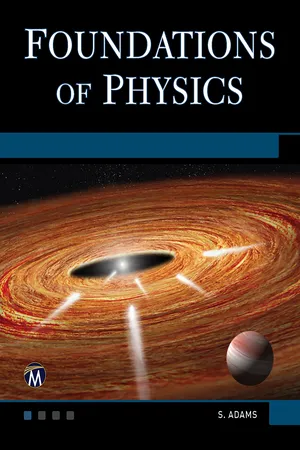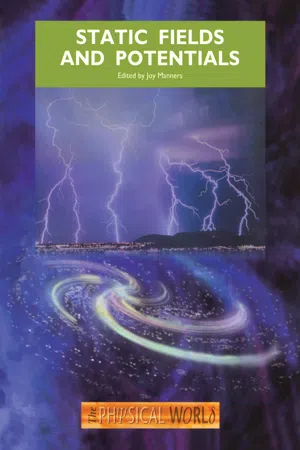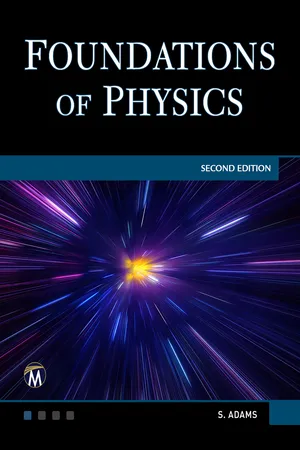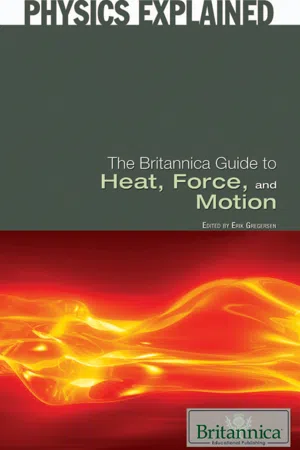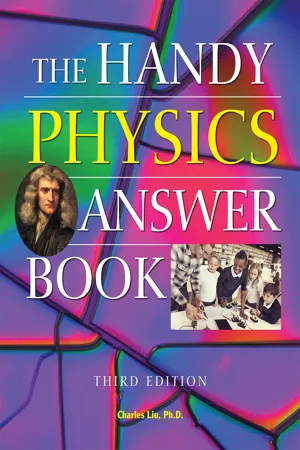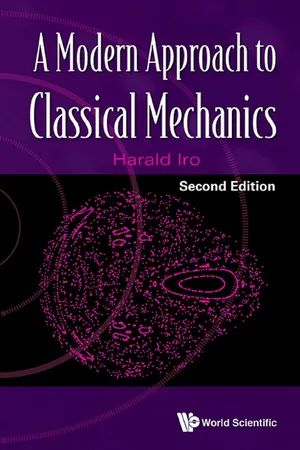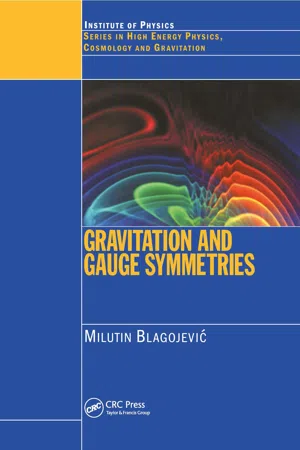Physics
Gravitational Fields
Gravitational fields are regions of space surrounding a mass where another mass experiences a force due to gravity. The strength of the gravitational field is determined by the mass of the object creating the field. In physics, gravitational fields are described using the concept of gravitational potential and are fundamental to understanding the behavior of objects in space.
Written by Perlego with AI-assistance
Related key terms
12 Key excerpts on "Gravitational Fields"
- eBook - ePub
- Michael M. Mansfield, Colm O'Sullivan(Authors)
- 2020(Publication Date)
- Wiley(Publisher)
Imagine that you are moving a mass to different positions in a room; wherever the mass is positioned it experiences the same force due to gravity, namely its weight, both in magnitude and in direction. We can think of this as a gravitational influence existing everywhere in the room. While the influence is present at all points in the room there is a force only at the location where the mass happens to be.Consider now the region of gravitational influence around a point mass or a uniform sphere. Since the strength and direction of the gravitational attraction is different in different locations, the force experienced by a point mass in this case changes in both magnitude and direction as its location is changed. Again, the gravitational influence due to the source mass may be thought of as existing at every point in space, although this influence only becomes apparent when a mass is located at the point.These ‘regions of gravitational influence’ are examples of force fields. The idea of a force field proves to be a very useful concept, particularly where ‘action at a distance’ is involved; that is, when the influence is experienced at points distant from the source of the force even though there is no material medium (such as a string) through which the force can be transmitted.Gravitational field lines
To get some idea of the ‘shape’ of a force field the concept of field lines proves useful. In the case of Gravitational Fields, field lines are defined as the lines along which a free point mass (a ‘test particle’) would move if released from rest. Some field lines around a single fixed‐point mass M are indicated in Figure 5.2 . Since the gravitational attraction between the test particle and the mass M is along the line joining them, the field lines are directed radially inwards as shown; the gravitational field around a single point mass or, as we will see later, around a uniform sphere are examples of a radial field. Field lines are, of course, simply geometrical constructions and do not exist as physical entities.Gravitational field lines around a point mass M.Figure 5.2Force fields of more complicated ‘shapes’ are quite common in nature. Consider, for example, the ‘shape’ of the gravitational field due to the combined effects of the Sun and the planets at some point (say) between the orbits of Jupiter and Saturn. The gravitational field in regions like this is much more complicated than in the special case discussed above; the complex motion of comets and asteroids in this part of the solar system is evidence of this. Note that field lines never intersect one another. - eBook - ePub
- Steve Adams(Author)
- 2019(Publication Date)
- Mercury Learning and Information(Publisher)
23Gravitational Field23.1 Gravitational Forces and Gravitational Field StrengthGravity is one of the four fundamental forces. It has infinite range and obeys a similar inverse-square law to electrostatics. All masses create Gravitational Fields, but, unlike the electrostatic forces between charges, which can be attractive or repulsive, gravitational forces are always attractive. The gravitational force acting on a mass close to the surface of the Earth is called weight.Newton stated that two point masses would exert an attractive force on each other that is directly proportional to the product of the masses and inversely proportional to their separation. The minus sign indicates attraction.23.1.1 Newton’s Law of GravitationG is the universal constant of gravitation, G = 6.674 × 10−11 Nm2 kg−2 .Newton was also able to show that the force of attraction between spheres of uniform density is the same as the attraction between two point masses placed at their centers. This means that we can treat object like planets and stars as point masses when considering orbital motion. It is also important to note that, by Newton’s third law, the forces on each mass have the same magnitude, even if the masses are different. For example, the weight of an apple in the Earth’s gravitational field is the same as the weight of the Earth in the apple’s gravitational field. It is also the case that the gravitational force exerted on the Earth by the Moon is equal in magnitude to the gravitational force exerted on the Moon by the Earth.The resultant gravitational force on a body affected by the Gravitational Fields of several other objects (e.g., the Earth affected by the Sun, Moon, and other planets) is the vector sum of the gravitational forces from each of the other objects.23.1.2 Gravitational Field StrengthThe idea that gravitational forces arise from a gravitational field removes the difficulty of an action-at-a-distance explanation. The Moon is attracted to the earth because it experiences a force from the gravitational field where it is, i.e., a local force - eBook - ePub
- Joy Manners(Author)
- 2020(Publication Date)
- CRC Press(Publisher)
m. In this way, the gravitational field can be defined at every point in space, even where there is no mass to experience a gravitational force. More precisely:The gravitational field is a vector quantity, defined at all points in space. Its value at any particular point is given by the gravitational force per unit 'test' mass at that point.By a 'test' mass we mean a mass that experiences the effect of the gravitational field, but we specifically exclude the possibility that the test mass will cause those masses that are responsible for creating the field to change their positions and thereby change the gravitational field that is being investigated.Because it is so important in physics, we will now spend some time on the field concept in general.2.4 Vector and scalar fields
The concept of a field is a very important and much-used idea in physicists' toolkits. Put into more precise language:A field is a physical quantity to which a definite value can be ascribed at every point throughout some region of space.In the case of a gravitational field, the quantity is the gravitational force per unit test mass. Because force is a vector quantity, a gravitational field is represented by a vector at every point, and we therefore call it a vector field. However, the general definition of a field simply refers to 'a physical quantity', and that quantity need not necessarily be a vector. A scalar quantity might occur as a field too — only in that case it will be a scalar field.You may not have thought of it in quite these terms before, but if you watch the TV weather forecasts you are in fact already quite familiar with examples of both scalar and vector fields. Figure 1.14 shows one representation of temperature and pressure fields. The temperature and pressure clearly fulfil the requirements of the definition in that they do have a value at every point in the region considered (the British Isles). It would be impractical to measure them at every point, but one could certainly obtain values for them at any point one cared to choose within the region. In Figure 1.14, the temperature and pressure values were measured at regularly spaced intervals, and written out as a grid. Figure 1.15 shows another representation of the fields, this time with 'isotherms' (lines connecting all points of equal temperature) and 'isobars' (lines of equal pressure). This representation is much more graphic, and easier to interpret. Figures 1.14 and 1.15 are examples of scalar fields: temperature and atmospheric pressure are scalar quanitities that are fully specified by a number and a unit. Wind velocity, on the other hand, is a vector, and the wind velocity field is therefore a vector field: a direction as well as a magnitude has to be assigned to every point in the field. The representation of the vector field is a little more difficult: in Figure 1.16 - eBook - ePub
- Steve Adams(Author)
- 2023(Publication Date)
- Mercury Learning and Information(Publisher)
23THE GRAVITATIONAL FIELD23.1 GRAVITATIONAL FORCES AND GRAVITATIONAL FIELD STRENGTHGravity is one of the four fundamental forces. It has an infinite range and obeys a similar inverse-square law to electrostatics. All masses create Gravitational Fields but unlike the electrostatic forces between charges, which can be attractive or repulsive, gravitational forces are always attractive. The gravitational force acting on a mass close to the surface of the Earth is called weight.23.1.1 Newton’s Law of GravitationNewton stated that two-point masses would exert an attractive force on one another that is directly proportional to the product of the masses and inversely proportional to their separation. the minus sign indicates attraction.G is the universal constant of gravitation, G = 6.674 × 10− 11 Nm2 kg− 2 .Newton was also able to show that the force of attraction between spheres of uniform density is the same as the attraction between two point masses placed at their centers. This means that we can treat object like planets and stars as point masses when considering the orbital motion. It is also important to note that, by Newton’s third law, the forces on each mass have the same magnitude, even if the masses are different. For example, the weight of an apple in the Earth’s gravitational field is the same as the weight of the Earth in the apple’s gravitational field. It is also the case that the gravitational force exerted on the Earth by the Moon is equal in magnitude to the gravitational force exerted on the Moon by the Earth.The resultant gravitational force on a body affected by the Gravitational Fields of several other objects (e.g., the Earth affected by the Sun, Moon, and other planets) is the vector sum of the gravitational forces from each of the other objects.23.1.2 Gravitational Field StrengthThe idea that gravitational forces arise from a gravitational field removes the difficulty of an action-at-a-distance explanation. The Moon is attracted to the earth because it experiences a force from the gravitational field where it is - eBook - ePub
Relativity
An Introduction to Spacetime Physics
- Steve Adams(Author)
- 2017(Publication Date)
- CRC Press(Publisher)
is possible to treat gravitational forces in a similar way to inertial forces. To do this he needed to observe the effects of gravity from an inertial frame inside the gravitational field. He discovered that the way to do this is to compare gravitation with acceleration, a link he formalized in the ‘equivalence principle’ which we shall meet very soon.fig 4.3 ‘Free’ bodies accelerate towards the Earth. This is explained in Newtonian mechanics by introducing the gravitational interaction. The Earth and ball exert equal attractive forces on one another4.1.2 Mach's Principle
‘When .... we say that a body preserves unchanged its direction and velocity in space, our assertion is nothing more or less than an abbreviated reference to the entire universe.’(Ernst Mach, The Science of Mechanics, 1883)Although it is unnecessary for the development of our ideas here, it is worth digressing slightly to consider what is now known as ‘Mach's Principle’. This is a speculation on the origin of inertia and the relativity of acceleration. Mach's ideas strongly influenced Einstein but were never clearly incorporated into general relativity. However, the origin of inertia is still obscure and Mach's ideas are simple, compelling and utterly relativistic!The existence of inertial forces in accelerated reference frames suggests that acceleration takes place against some background of absolute space. This is the conclusion Newton drew from his bucket experiments. The surface of the water in the bucket becomes concave whenever the water rotates with respect to the fixed stars. Rotation relative to the bucket itself is irrelevant (once the bucket has been rotating for a while it will be at rest relative to the water although the water surface remains curved). - eBook - ePub
- Britannica Educational Publishing, Erik Gregersen(Authors)
- 2010(Publication Date)
- Britannica Educational Publishing(Publisher)
-8 , but some of the consequences of these correction terms are measurable and important tests of Einstein’s theory. It should be pointed out that prediction of new observable gravitational effects requires particular care; Einstein’s pioneer work in gravity has shown that Gravitational Fields affect the basic measuring instruments of experimental physics—clocks, rulers, light rays—with which any experimental result in physics is established. Some of these effects are listed below:• The rate at which clocks run is reduced by proximity of massive bodies; i.e., clocks near the Sun will run slowly compared with identical clocks farther away from it.• In the presence of Gravitational Fields, the spatial structure of physical objects is no longer describable precisely by Euclidean geometry; for example, in the arrangement of three rigid rulers to form a triangle, the sum of the subtended angles will not equal 180°. A more-general type of geometry, Riemannian geometry, seems required to describe the spatial structure of matter in the presence of Gravitational Fields.• Light rays do not travel in straight lines, the rays being deflected by Gravitational Fields. To distant observers the light-propagation speed is observed to be reduced near massive bodies.Gravitational Fields AND THE THEORY OF GENERAL RELATIVITY
In Einstein’s theory of general relativity, the physical consequences of Gravitational Fields are stated in the following way. Space-time is a four-dimensional non-Euclidean continuum, and the curvature of the Riemannian geometry of space-time is produced by or related to the distribution of matter in the world. Particles and light rays travel along the geodesics (shortest paths) of this four-dimensional geometric world.There are two principal consequences of the geometric view of gravitation: (1) the accelerations of bodies depend only on their masses and not on their chemical or nuclear constitution, and (2) the path of a body or of light in the neighbourhood of a massive body (the Sun, for example) is slightly different from that predicted by Newton’s theory. The first is the weak principle of equivalence. Newton himself performed experiments with pendulums that demonstrated the principle to better than one part in 1,000 for a variety of materials, and, at the beginning of the 20th century, the Hungarian physicist Roland, Baron von Eötvös, showed that different materials accelerate in Earth’s field at the same rate to within one part in 109 . More-recent experiments have shown the equality of accelerations in the field of the Sun to within one part in 1011 - eBook - ePub
- Charles Liu(Author)
- 2020(Publication Date)
- Visible Ink Press(Publisher)
G is the symbol for the universal gravitational constant. It is called universal because it is the same for objects made of any material and of any mass—from an apple to a galaxy.The equation that describes the gravitational field at a specific location isIf the sun suddenly disappeared, what would happen to the sun’s gravity?W hat would happen to Earth if the sun suddenly disappeared? How soon would Earth recognize that the sun’s gravitational field was gone? It couldn’t happen instantaneously because according to Einstein’s Special Theory of Relativity, no information can travel faster than the speed of light. It would take about eight minutes before Earth would both experience the lack of sunlight and the lack of gravitational force at the same time.g = −GM/r2Here, M is the mass of the attracting object, and r is the distance from the center of this mass to the location in space. The gravitational field is a vector quantity, and its direction is toward the center of the attracting object.What is the difference between a gravitational field and gravitational acceleration?
When Isaac Newton developed his Universal Law of Gravitation, nobody had yet understood the concept of a gravitational field. Instead, Newton found g = −GM/r2 to be the acceleration of an object by another object due to the force of gravity. About 200 years after Newton’s work, Albert Einstein developed the General Theory of Relativity; one part of that theory is called the Principle of Equivalence, which explains that you cannot tell the difference between being accelerated by a pulling force and being acted upon by gravity.How does a gravitational field relate to force?
According to Newton’s Second Law of Motion, the force exerted on an object is equal to the object’s mass times its acceleration. Because of the Principle of Equivalence, it is appropriate to say that the force of gravity on an object is equal to the object’s mass times the gravitational field strength or, written as an equation, F = mg = −GMm/r2 - eBook - ePub
- (Author)
- 2008(Publication Date)
- Elsevier Science(Publisher)
owhere has a precise definition of the term “gravitational field” been given—nor will one be given. Many different mathematical entities are associated with gravitation: the metric, the Riemann curvature tensor, the Ricci curvature tensor, the curvature scalar, the covariant derivative, the connection coefficients etc. Each of these plays an important role in gravitation theory, and none is so much more central than the others that it deserves the name “gravitational field.” Thus it is that throughout this book that the terms “gravitational field” and “gravity” refer in a vague, collective sort of way to all of these entities. Another, equivalent term used for them is the “geometry of spacetime.”Anderson also claims that “geometry and gravitation [are] one and the same thing”,19 but he does not elaborate. Even Feynman, supposedly the nemesis of the geometric interpretation, writes that he wants “to understand how gravity can be both geometry and field”.20I will later (in Section 5 ) argue that there are different forms of egalitarianism, some of which are indeed compatible with both geometric and field interpretations. This also explains why we find egalitarian remarks in the texts of proponents of both standard interpretations. However, strong egalitarianism will remain an alternative interpretation—and indeed a very promising one, as we will see. But first, I will have to make precise what it means for a given mathematical object to have geometrical and/or gravitational significance (Section 3 ), and clarify what should be reasonably understood under the term ‘gravitational field’ in the context of standard GR (Section 4 ); hence arguing that it is not necessary to use the term in a “vague, collective sort of way”.3 Geometrical and gravitational significance
Which of the three interpretations is the one most faithful to the formalism? Before I can start to answer this question, two definitions are in order.A mathematical object has geometrical significance if it gives us an account of geometrical phenomena, and hence is needed in a theory to represent or model aspects of physical spacetime geometry. Note that this notion of a mathematical object having geometric significance is a weaker condition than Brown's (2005) notion of a mathematical object having chronogeometric - eBook - ePub
- Harald Iro(Author)
- 2015(Publication Date)
- WSPC(Publisher)
6Gravitational force between two bodies
So far we have considered one particle moving under the influence of an ‘external’ force. Now we want to apply the results of the last chapter to the planetary system, considering for the moment only the motion of a single planet around the sun. Therefore we have to show first that the motion of two interacting bodies can be related to the one of a single body in a field of force. In fact, under suitable assumptions about the force, the interaction of two point masses can be reduced to the motion of one point mass in a central field of force.6.1 Two-body systems
Till now we ignored the source of the force. Indeed, the force must be due to bodies – or other physical objects – that we did not take into account. But in considering these bodies, questions about the interaction of two bodies inevitably arise: for example, whether the mutual forces are exerted instantaneously or with some delay (‘retardation effect’). In classical nonrelativistic mechanics, the fields of force usually depend only on the radius vector. This implies that the interaction is instantaneous, since any movement of the source of the force has an immediate effect on other bodies within the range of the force. The theory of relativity demolished the view that forces act instantaneously: a force cannot propagate faster than the speed of light. If one wishes to take into account the finite speed of propagation of a particular interaction, then one will arrive at a field theory of that interaction. For the electric and magnetic forces, the field theory is electrodynamics; for the gravitational interaction, it is Einstein’s general theory of relativity. The common assumption in classical mechanics about the instantaneous propagation of forces is an approximation that is only justified by the small velocities (compared to the speed of light) of the bodies involved.Let us consider two point masses m1 and m2 that exert forces on each other mutually; i.e. a so-called interaction force - eBook - ePub
- M Blagojevic(Author)
- 2001(Publication Date)
- CRC Press(Publisher)
Chapter 7Gravity in flat spacetime
There are many attempts to understand the structure of gravity, but all of them can be roughly classified into two categories according to whether they are focused on the geometric or the particle aspects of gravity.The standard geometric approach is based on Einstein’s GR, a theory in which gravitational phenomena are connected with the geometry of spacetime. Notable analogies between electromagnetic and gravitational interactions have inspired many attempts to unify these two theories into a single structure. Nowadays we know that any programme of geometric unification must necessarily be more general, since the world of fundamental interactions contains much more than just electromagnetism and gravity.There is, however, another approach to unification, which is based on the idea that gravity can be described as a relativistic quantum field theory in flat spacetime, like all the other fundamental interactions. The construction must be such that it can reproduce the following results of experimental observations:▪gravity has a long range (force proportional to r -2 ); then,▪it is attractive, ▪acts in the same way on all kinds of matter (PE) and▪satisfies the standard classical tests (the gravitational redshift, the precession of Mercury’s orbit, the deflection of starlight passing near the sun and the time delay of radar signals emitted from Earth).If we adopt the standard quantum field theory approach to gravity, the gravitational force is explained by the exchange of a particle called a graviton (figure 7.1). Which properties should the graviton have in order to reproduce the basic experimental requirements?In a field theory, long range forces are produced by the exchange of massless particles, as in electrodynamics. Can we exclude the possibility of a very small but finite graviton mass? The answer is affirmative, as we shall see.Relativistic particles are characterized by definite values of mass and spin. In order to determine the spin of the graviton, we shall analyse different possibilities and try to identify those which are in agreement with the previous experimental facts. - eBook - ePub
- Robert M. Wald(Author)
- 2010(Publication Date)
- University of Chicago Press(Publisher)
FOURTEEN
QUANTUM EFFECTS IN STRONG Gravitational FieldsAs described in chapter 4 , the theory of general relativity put forth a revolutionary new viewpoint on spacetime structure and gravitation. However, in one important sense, this theory is not revolutionary enough. It is well established that all known physical fields must be described on a fundamental level by the principles of quantum theory. In quantum theory, states of a system are represented by vectors in a Hilbert space, and observable quantities are represented by self-adjoint linear maps acting on Unless the state of the system happens to be in an eigenstate of the observable, the observable will not have a definite value and one can predict only probabilities for the outcomes of measurements. However, general relativity is a purely classical theory, since in the framework of general relativity the observable quantities—in particular, the spacetime metric—always have definite values. Thus, if the principles of quantum theory are to apply to the gravitational field, general relativity must at best be only an approximation to a truly fundamental theory of gravity, perhaps in the same sort of way as Maxwell’s theory of electromagnetism is only an approximation to quantum electrodynamics.Classical descriptions of ordinary matter are, in general, excellent approximations for describing phenomena which occur on macroscopic scales, although even here quantum effects can be important for suitably prepared states. However, the classical description of matter becomes wholly inadequate on atomic and smaller scales. In this case, the scale at which the classical description breaks down is determined by the masses and charges of the fundamental particles as well as the two fundamental constants of nature which enter the theory, namely Planck’s constant, , and the speed of light, c. Similarly, in a quantum theory of gravitation based on general relativity, one would expect that the fundamental scale at which the classical description becomes wholly inadequate should be set by , c, and the gravitational constant, G. There is a unique combination of these constants which has the dimensions of length, namely the quantity lP ≡(G /c3)l/2, called the Planck length. - eBook - ePub
- Hermann Weyl(Author)
- 2013(Publication Date)
- Dover Publications(Publisher)
The fact that a given gravitational field imparts the same acceleration to every mass that is brought into the field constitutes the real essence of the problem of gravitation. In the electrostatic field a slightly charged particle is acted on by the force e. E, the electric charge e depending only on the particle, and E, the electric intensity of field, depending only on the field. If no other forces are acting, this force imparts to the particle whose inertial mass is m an acceleration which is given by the fundamental equation of mechanics m b = e E. There is something fully analogous to this in the gravitational field. The force that acts on the particle is equal to g G, in which g, the “g ravitational char g e,” depends only on the particle, whereas G depends only on the field : the acceleration is determined here again by the equation m b = g G. The curious fact now manifests itself that the “g ravitational charge” or the “gravitational mass” g is equal to the “inertial mass” m. Eötvös has comparatively recently tested the accuracy of this law by actual experiments of the greatest refinement (vide note 3). The centrifugal force imparted to a body at the earth’s surface by the earth’s rotation is proportional to its inertial mass but its weight is proportional to its gravitational mass. The resultant of these two, the apparent weight, would have different directions for different bodies if gravitational and inertial mass were not proportional throughout. The absence of this difference of direction was demonstrated by Eotvos by means of the exceedingly sensitive instrument known as the torsion-balance : it enables the inertial mass of a body to be measured to the samedegree of accuracy as that to which its weight may be determined by the most sensitive balance
Index pages curate the most relevant extracts from our library of academic textbooks. They’ve been created using an in-house natural language model (NLM), each adding context and meaning to key research topics.

